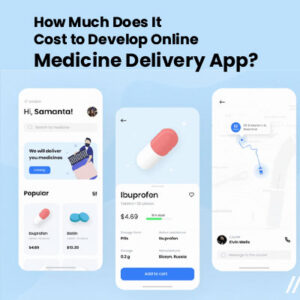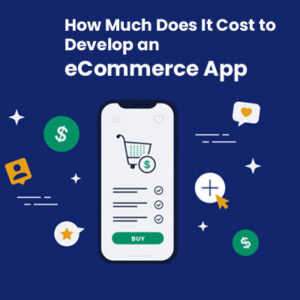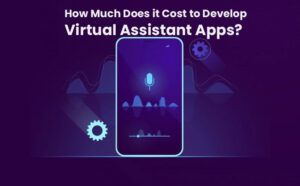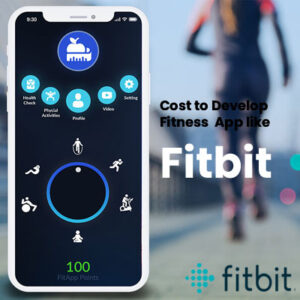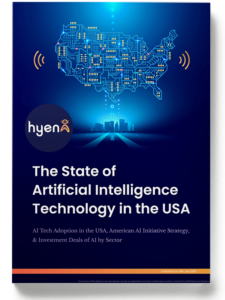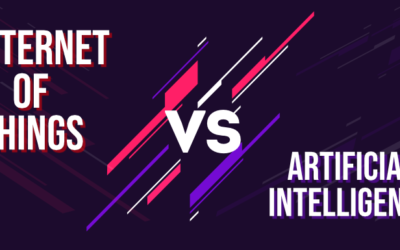Predictive Analytics in Fintech
What is the Role of Predictive Analytics in Fintech? A Guide for Decision-Makers
In the information age of the modern financial environment, predictive analytics can be a necessity. Fintech companies are using the AI technology to anticipate trends, develop individualized user experiences, mitigate risk, and drive competitive edge. Industry decision-makers should be aware of the potential trends and uses of predictive analytics to drive their companies toward innovation and profitability. This blog explores the core role of predictive analytics in fintech and offers business managers insights into value generation.
What is Predictive Analytics in Fintech?
Predictive analytics is one of the emerging technologies of Artificial Intelligence (AI) that works based on historical data, statistical models, and Machine Learning models for forecasting future events. The role of Predictive analytics in fintech is designed for credit scoring, fraud, customer retention, portfolio management, etc. It can transform raw data into smart insights, allowing fintech companies to make more intelligent, quicker, and more precise decisions.
Key Applications of Predictive Analytics in Fintech
-
Credit Scoring and Risk Assessment
Predictive models analyze a borrower’s financial records, expenditures, social behavior, and even mobile phone usage history to establish creditworthiness. In contrast to conventional banking, which tends to rely on credit agency information, fintech utilizes a wide array of data to evaluate risks in real-time.
Benefits to decision-makers:
- Approve thin-file or underbanked customers’ loans.
- Reduce default rates via early warning systems.
- Offer risk-based credit products that are tailored.
-
Fraud Detection and Prevention
Predictive analytics is also applied to identify and flag fraudulent behavior. By the analysis of transaction history and user pattern of behavior, models are able to identify anomalies and suspicious activity, usually in real time.
Predictive Analytics Advantages in FinTech for Fraud Detection:
- Improve accuracy of fraud attempt detection.
- Minimize loss of funds and chargebacks.
- Establish site and customer trust.
-
Personalized Financial Services
By monitoring personal consumer spending behavior and interests, fintech websites can offer personalized investment recommendations, spending reports, insurance recommendations, etc.
The best examples of predictive analytics in FinTech:
- Tailor-made portfolio robo-advisors.
- AI-driven money advice chatbots.
- Customized overspending or savings notifications.
-
Customer Retention and Engagement
Predictive models indicate customer dissatisfaction or churn behavior. Fintech players can respond to one-to-one retention action before customers churn out of the system.
A few predictive analytics strategies for FinTech are:
- Reward discount or loyalty.
- Active resolution of complaints
- Enhancing behavior-based user experience.
-
Dynamic Pricing and Interest Rates
Fintech lenders utilize predictive analytics to adjust interest rates dynamically in real time according to the credit history, risk profile, and market conditions of the borrower.
Advantages of Predictive Analytics in FinTech:
- Optimal and profitable prices.
- Enhanced market need matching with.
- Decrease risk exposure.
Best Predictive Analytics Technologies and Tools Used for FinTech App Development
FinTech application development using the below advanced technologies helps companies transform their traditional approaches to purely revenue generating. Fintech companies can utilize a combination of the technologies below in a bid to make predictive analysis apps more feasible.
- Machine Learning Algorithms: Linear Regression, Decision Trees, Neural Networks, Ensemble Methods.
- Big Data Platforms: Hadoop, Apache Spark, and cloud platforms such as AWS and Azure.
- Business Intelligence Tools: Tableau, Power BI, and Looker for the creation of visualizations.
- Business Intelligence Tools: Tableau, Power BI, and Looker to develop visualization.
- Programming Languages: Python, R, and SQL for data modeling and automation.
Challenges in Implementing Predictive Analytics in FinTech
While the payoffs are enormous, making predictive analytics work is not a cakewalk:
- Data Privacy and Compliance
Challenge: Fintech companies are required to cope with complex regulations like GDPR and CCPA while handling customer data.
Solution: Be transparent, get consent, and use data anonymization techniques.
- Model Accuracy and Bias
Challenge: Mis-trained models or biased data will tend to make wrong predictions, particularly if they are credit scoring or lending.
Solution: Use multiple data sets and check models routinely for fairness and accuracy.
- Infrastructure and Talent Gap
Challenge: Heavy computation requires scalable infrastructure and sophisticated data scientists, both of which might be in short supply within smaller fintech firms.
Solution: Invest in training or partnerships with cloud-based analytics platforms.
Future Trends of Predictive Analytics in Fintech
- Real-time Predictive Insights
The move toward real-time analytics will enable fintech to offer immediate risk scores, dynamic approvals, and live fraud prevention.
- Explainable AI (XAI)
As there is increasing regulatory oversight, fintech will create models that can provide explanations for their predictions in human terms, increasing transparency.
- Hyper-Personalization
Predictive analytics will go beyond segmentation to offer one-to-one personalization—offering financial products that change in real time to meet user needs.
- Predictive Maintenance of Infrastructure
Just as predictive analytics can assist in gauging financial risk, it can do the same to monitor backend infrastructure and identify and prevent system failure.
What Factors To Consider for Predictive Analytics App Development?
Developing a predictive analytics app requires careful planning, combining data science expertise, domain knowledge, and robust software engineering. Here are the key factors to consider for successful predictive analytics mobile app development:
- Business Objectives: Clearly define the problem your app solves. Align it with KPIs like churn reduction, risk prediction, or demand forecasting.
- User Understanding: Know your audience. Design interfaces and insights based on whether users are technical or non-technical.
- Data Quality: Ensure access to clean, relevant, and sufficient data. Set up ETL pipelines to manage and preprocess this data.
- Model Selection: Choose ML algorithms suited to the task, regression, classification, or forecasting, balancing accuracy and simplicity.
- Tech Stack: Use scalable backend tools (Python, Java) and ML libraries (TensorFlow, Scikit-learn) with cloud infrastructure for deployment.
- Prediction Mode: Decide between real-time (fraud detection) and batch (weekly reports) based on performance and latency needs.
- Security & Compliance: Encrypt data, manage access, and follow regulations like GDPR or HIPAA to protect sensitive information.
- 24/7 Monitoring: Track model performance and drift. Set up feedback loops to retrain models and adapt to changing data.
- UI & Visualization: Present insights through clear dashboards, charts, and confidence indicators for quick decision-making.
- Cost Management: Optimize cloud usage and model performance to reduce development and maintenance expenses.
Conclusion
Predictive analytics is transforming how fintech works allowing for better decisions, individualized services, and anticipatory risk management. For decision-makers, embracing predictive analytics is not a technical improvement but a strategic necessity. As fintech keeps on shaking up traditional finance, individuals who make investments in predictive analytics now will head the financial innovation of the future.
Talk to our experts for more details.



